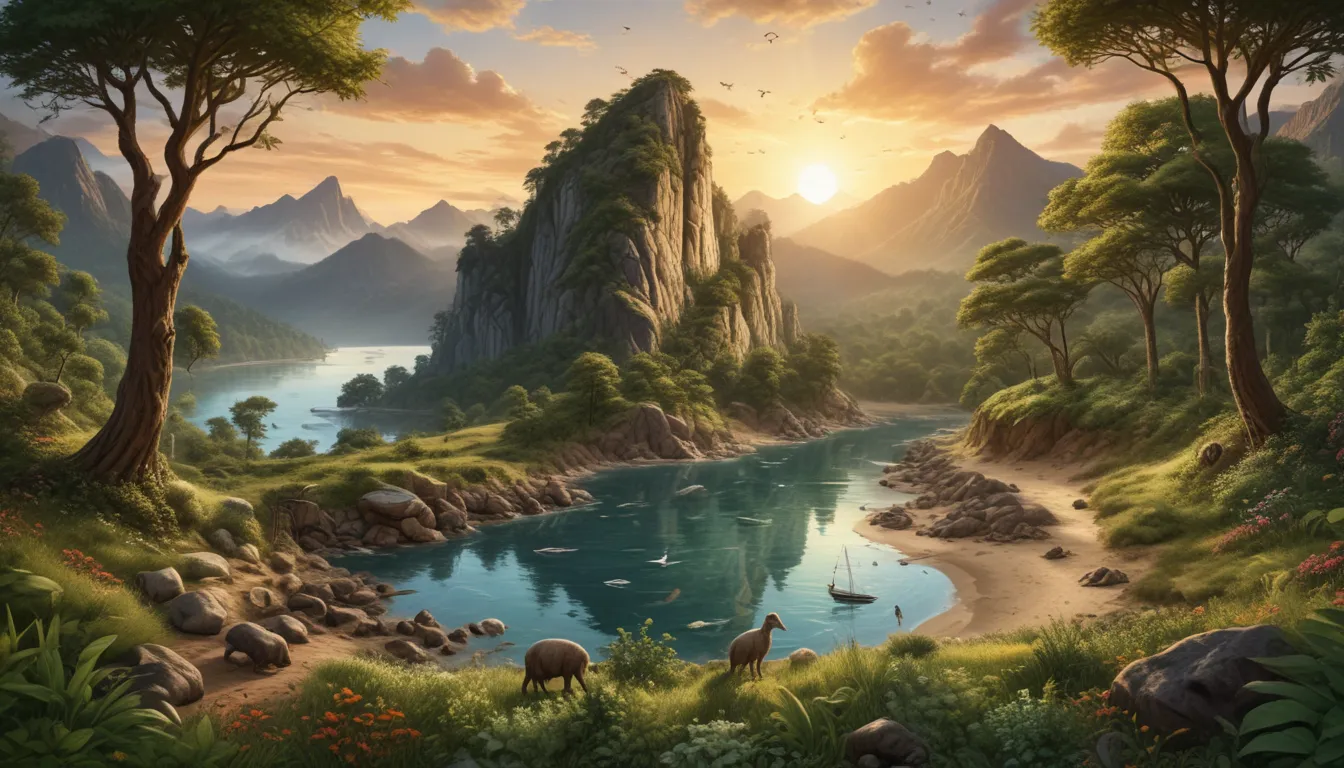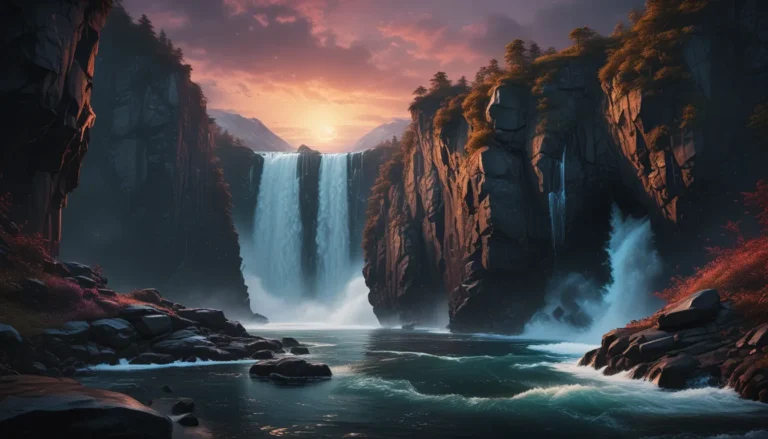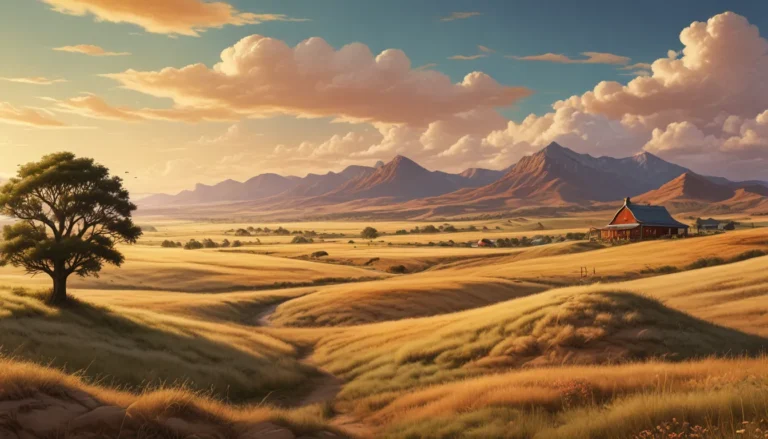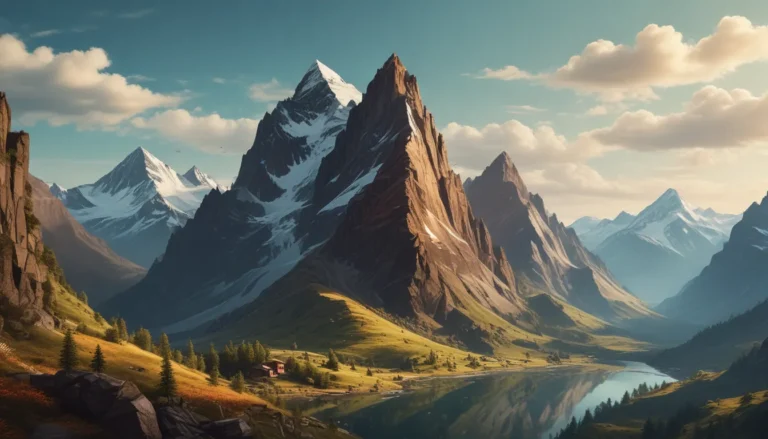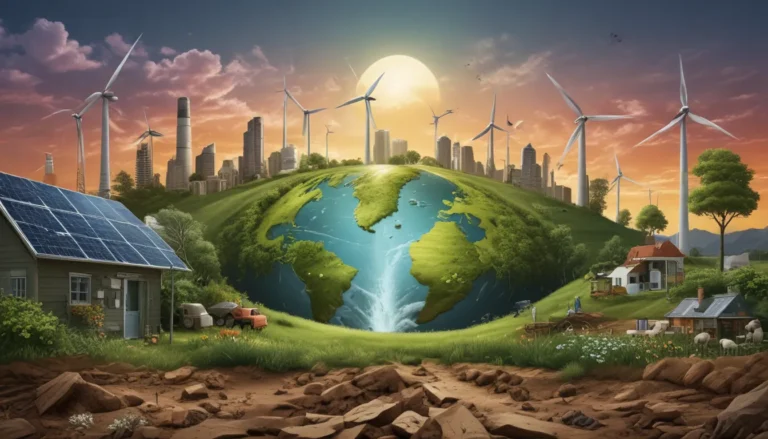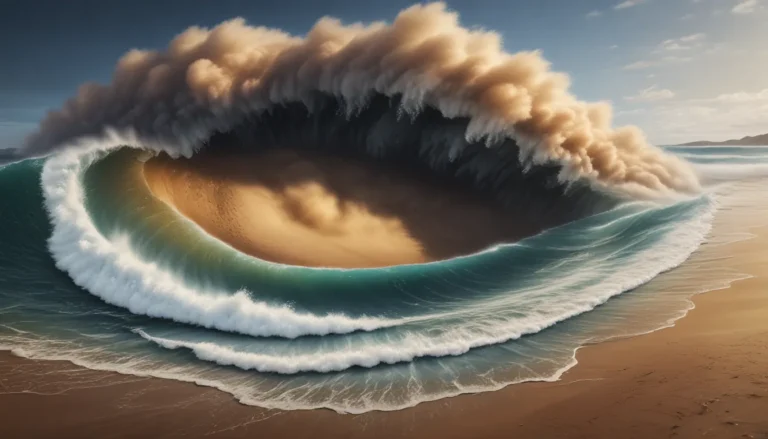A Note About Images: The images used in our articles are for illustration purposes only and may not exactly match the content. They are meant to engage readers, but the text should be relied upon for accurate information.
Welcome to the enchanting realm of biogeographic regions! These incredible areas of our planet are brimming with unique ecosystems, diverse flora, and fascinating fauna. Biogeographic regions are essential in unraveling the distribution patterns of various species and understanding the forces that mold their evolution.
Each biogeographic region, from the vibrant rainforests of the Amazon to the icy tundras of the Arctic, has a captivating tale to tell. In this article, we will delve into 16 captivating facts about these extraordinary regions, delving into their biodiversity, conservation efforts, and the interconnectedness of life on Earth.
So, prepare yourself for an enlightening journey through the varied landscapes and abundant biological heritage of biogeographic regions. Get ready for an adventure that will leave you with a profound admiration for the natural marvels of our world!
Unveiling the Gems of Biogeographic Regions:
- Biogeographic regions are akin to treasure troves showcasing unique plants and animals found nowhere else on Earth, such as the Great Barrier Reef and the African savanna.
- These regions, like the Amazon rainforest and the Galapagos Islands, serve as captivating classrooms of evolution and biodiversity, offering insightful stories of life and adaptation.
Discovering the Diverse Ecosystems: A Sanctuary for Life
Biogeographic regions are renowned for their rich and diverse ecosystems, serving as sanctuaries for a plethora of plant and animal species.
Exploring the Intersection of Land and Water:
These regions often stretch across both land and water, encompassing terrestrial, freshwater, and marine ecosystems. This dynamic fusion contributes to their incredible biodiversity.
Embracing Unique Species Found Nowhere Else:
Biogeographic regions harbor numerous endemic species that are exclusive to these areas. These remarkable organisms have evolved in isolation, adapting to their specific habitats over time.
The Enchanting Great Barrier Reef: Nature’s Masterpiece
The Great Barrier Reef, nestled in the Coral Triangle biogeographic region, stands as the largest coral reef system globally. Home to a breathtaking array of marine life, including vibrant corals, tropical fish, and majestic sea turtles.
The Majestic Amazon Rainforest: The Earth’s Lungs
Tucked away in the Neotropical biogeographic region, the Amazon rainforest reigns as the largest tropical rainforest globally. It plays a pivotal role in climate regulation and shelters countless species, many yet to be uncovered.
The Iconic African Savanna: Realm of the Big Five
The African savanna, a gem of the Afrotropical biogeographic region, is famed for its iconic wildlife. Hosting the renowned Big Fives – lion, leopard, elephant, rhinoceros, and buffalo.
The Legendary Galapagos Islands: A Living Lab
Sitting in the Eastern Pacific biogeographic region, the Galapagos Islands are renowned for their unique biodiversity and their impact on Charles Darwin’s theory of evolution. A fascinating glimpse into species’ intricate relationships.
The Enchanting Pacific Northwest: Forests and Wildlife Wonderland
The Pacific Northwest, a paradise in the Nearctic biogeographic region, boasts lush temperate rainforests and diverse wildlife, from towering Douglas fir trees to majestic orcas.
The Alluring Arctic Tundra: A Fragile Landscape
Nestled in the Palearctic region, the Arctic tundra is a vast and harsh landscape. With extreme cold temperatures and short growing seasons, it presents a challenging environment for plant and animal life.
The Vibrant Mediterranean: Cultural Mosaic and Biodiversity Haven
The Mediterranean region in the Palearctic biogeographic region, celebrated for its rich cultural heritage and exceptional biodiversity. Teeming with life from olive groves in Greece to marine marvels in the Mediterranean Sea.
The Enigmatic Hawaiian Islands: Evolutionary Marvels
The Hawaiian Islands, a treasure trove in the Oceania biogeographic region, have evolved in isolation for millions of years. Resulting in a stunning array of endemic species that grace no other part of the world.
The Forgotten Cerrado: Brazil’s Biodiversity Gem
Tucked away in the Neotropical region of Brazil, the Cerrado is a hidden biodiversity hotspot. Home to a plethora of plants and animals, many endemic to this overlooked region.
The Majestic Himalayas: Peaks and Treasures
Spanning across multiple biogeographic regions, the Himalayas are synonymous with towering peaks and breathtaking landscapes. Housing a diverse range of unique species, including the elusive snow leopard.
The Spectacular Great Lakes: Freshwater Marvel
The Great Lakes region in the Nearctic biogeographic region boasts a sprawling freshwater ecosystem. Supporting a diverse array of fish species and serving as vital habitats for migratory birds.
The Enigmatic Boreal Forest: Earth’s Northern Gem
Stretching across the Palearctic and Nearctic regions, the boreal forest stands as the largest land biome globally. Home to an incredible diversity of plants and wildlife across North America, Europe, and Asia.
The Extraordinary Australian Outback: Land of Extremes
The Australian Outback in the Australasian biogeographic region is an expansive arid landscape. Despite its harsh conditions, it shelters a unique array of plants and animals, from kangaroos and koalas to the iconic Ayers Rock.
These mesmerizing insights into biogeographic regions showcase their vast ecological and cultural significance. From the awe-inspiring biodiversity of the Amazon rainforest to the evolutionary marvels of the Galapagos Islands, these regions offer a glimpse into the wonders of the natural world.
In Essence
In essence, the world’s biogeographic regions are a tapestry of diversity and ecological importance. From the lush Amazon rainforest to the enchanting Galapagos Islands, these regions hold a trove of natural wonders awaiting exploration.
Understanding and safeguarding these regions is paramount to conserving our planet’s biodiversity and ensuring a sustainable future. By delving into the unique ecosystems and species within these regions, we can unravel the intricate tapestry of life on Earth.
Whether you’re a nature enthusiast or simply curious about our world, embarking on a journey through the captivating world of biogeographic regions is an adventure worth taking. So, grab your gear, set forth on this expedition, and witness the stunning beauty and complexity of our planet’s biogeographic regions.
FAQs Answered:
- What is a biogeographic region?
-
A biogeographic region is a geographic area defined by distinct ecological and evolutionary features, based on the distribution of plant and animal species.
-
How many biogeographic regions exist?
-
There are 35 recognized biogeographic regions globally, each with its unique environmental conditions and species compositions.
-
What determines the boundaries of these regions?
-
The boundaries of biogeographic regions are influenced by factors such as geographical barriers, climate patterns, and the distribution of species.
-
Why are biogeographic regions significant?
-
These regions play a vital role in preserving biodiversity and unveiling the natural history of various species, providing insights into evolution and adaptation.
-
Can biogeographic regions overlap?
-
Yes, different biogeographic regions can overlap, forming transition zones characterized by a blend of species from both regions.
-
Are biogeographic regions static?
-
No, biogeographic regions are dynamic and can change over time due to natural events like climate change and human-induced factors such as habitat destruction.
-
Do biogeographic regions extend into the ocean?
- Yes, biogeographic regions also exist in the ocean, delineated by factors like temperature, ocean currents, and marine species presence.
Reflecting on Our Commitment
Our dedication to presenting trustworthy and engaging content is at the core of our endeavors. Each fact shared on our platform is generously contributed by real users like you, enriching our repository with diverse insights and knowledge. Rest assured, our proficient editors meticulously review every submission, ensuring the highest standards of accuracy and reliability. Trust in our commitment to quality and authenticity as you delve into the captivating realm of knowledge and discovery.
